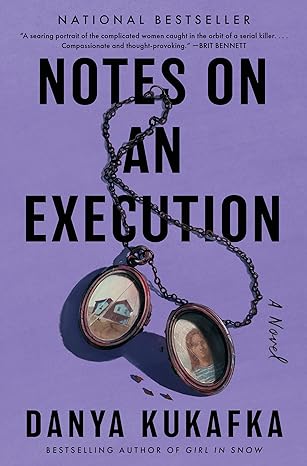
This book is classified as literary suspense for those of you keeping score. It is Kukafka’s second novel and you probably have to go read the first one too. The question she is asking here is all about power. Why do we insist on trying to understand violent men and ignore the lives of the women they kill? What is the nature of choice in our lives and when is it too late to make different choices? What about all the alternate choices we could have made?
Interestingly, she manages to humanize a serial killer, but part of how she does it is by making the story about other people, specifically the women in his life, rather than making it about him. Ultimately, he is insignificant and the reader is left wishing for the lives the women could have had, the roads not taken, as it were. Justice is impossible. Even though it is a “down” ending, the reader is also left with hope, because Saffy, an investigator with the NY state police is working a new case and trying to save a young woman. She chooses to make meaning from the events of the novel by choosing to make things better, to attempt to restore some sense of balance in the way the world views serial killers.
This is a multiple point of view, non-linear telling that maintains the tension by revealing different parts of the story only when necessary. If you are looking for a good example of how and when to reveal backstory, this will work.
I just have one tiny complaint. On page 144, she references the giant statue of Sam Houston on the highway in Huntsville, Texas (home of the state penitentiary and where Texas’s death row is). She says it is marble. “…that the Sam Houston Monument is rising in the distance, towering over the border of Huntsville…As the van speeds closer, the statue reveals itself, gigantic in sculpted marble.” It is not made of marble. The statue is 67 feet tall—too big to be marble. It is concrete and reinforced steel, which would have taken all of about 30 seconds to find out with a little research. I loved the novel, but I have to admit that getting this wrong, when it would have been pretty easy to get it right, made me question what else she got wrong.
But still, I would recommend this book, because it is a beautiful read!
London: HarperCollins Publishers Ltd, 2022
Check from e-catalogue ESTER.
Robin Henry
Volunteer at the Department of Literature in Foreign Languages

